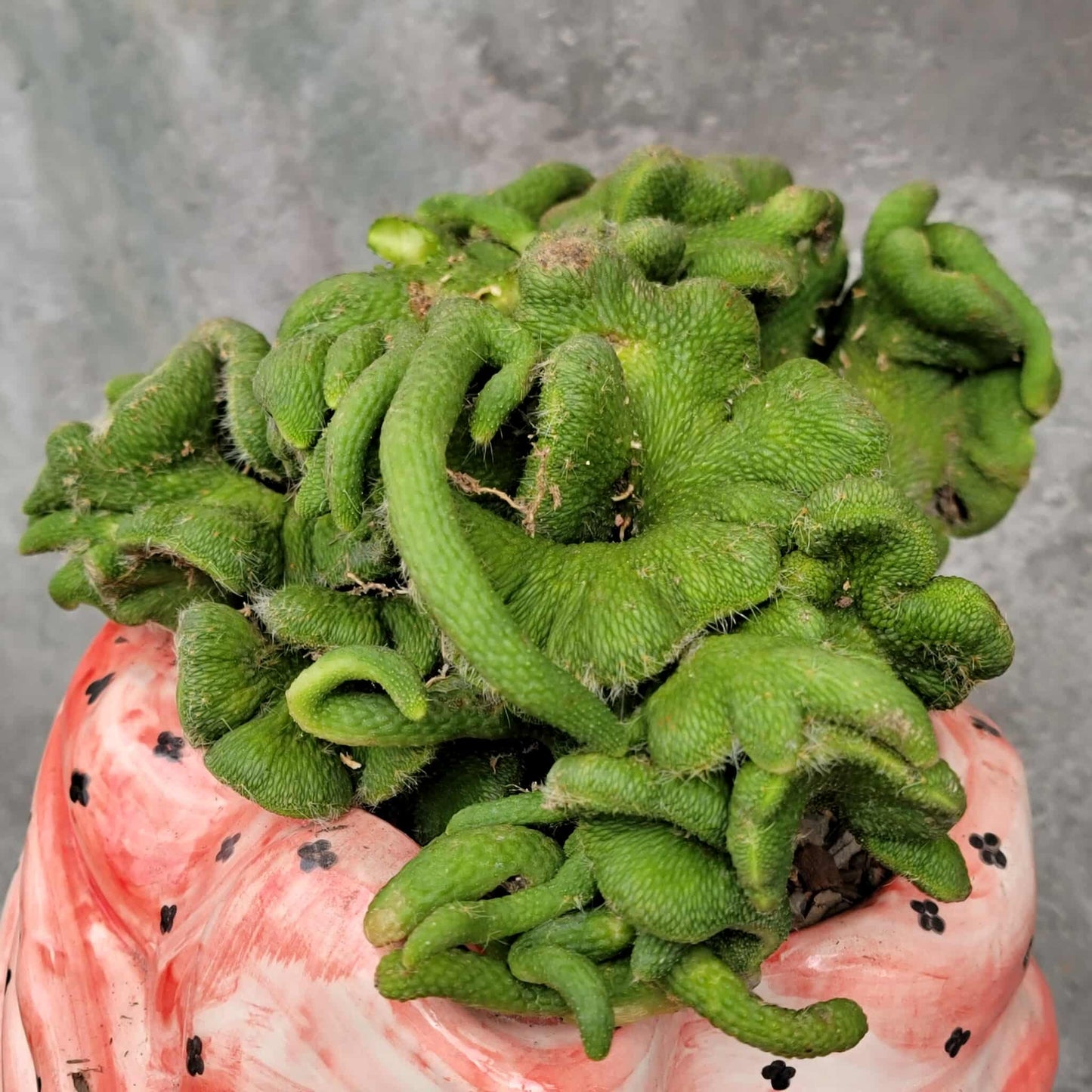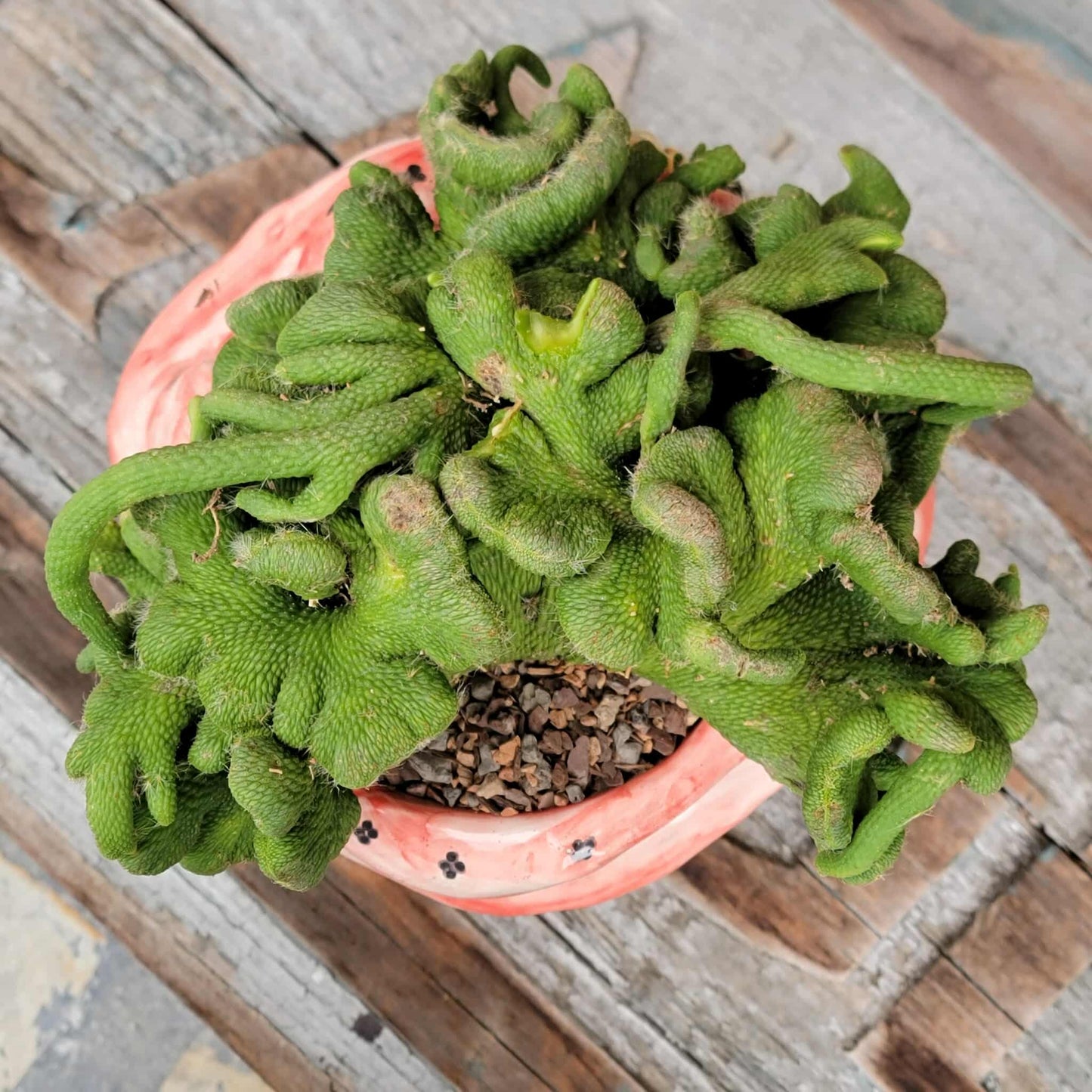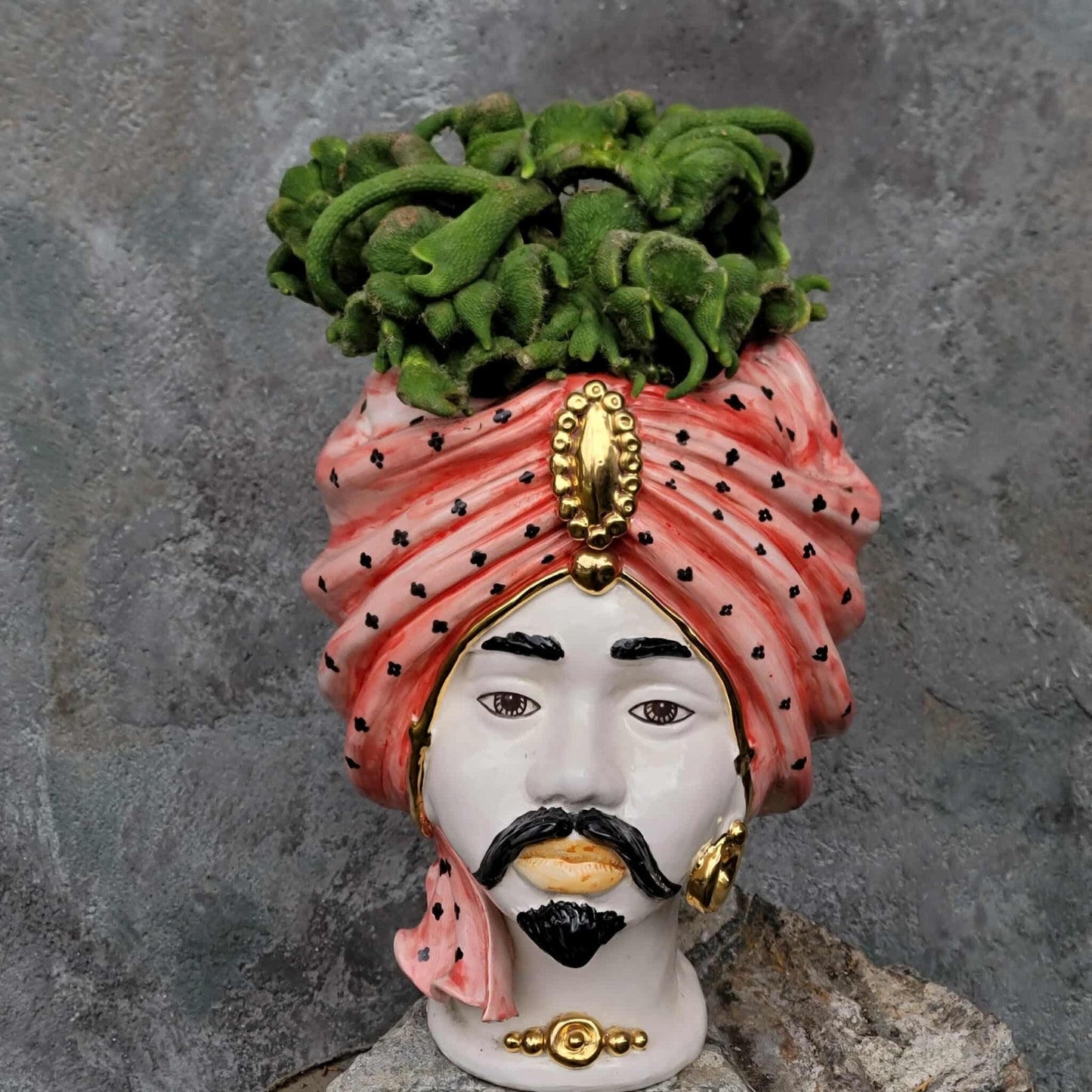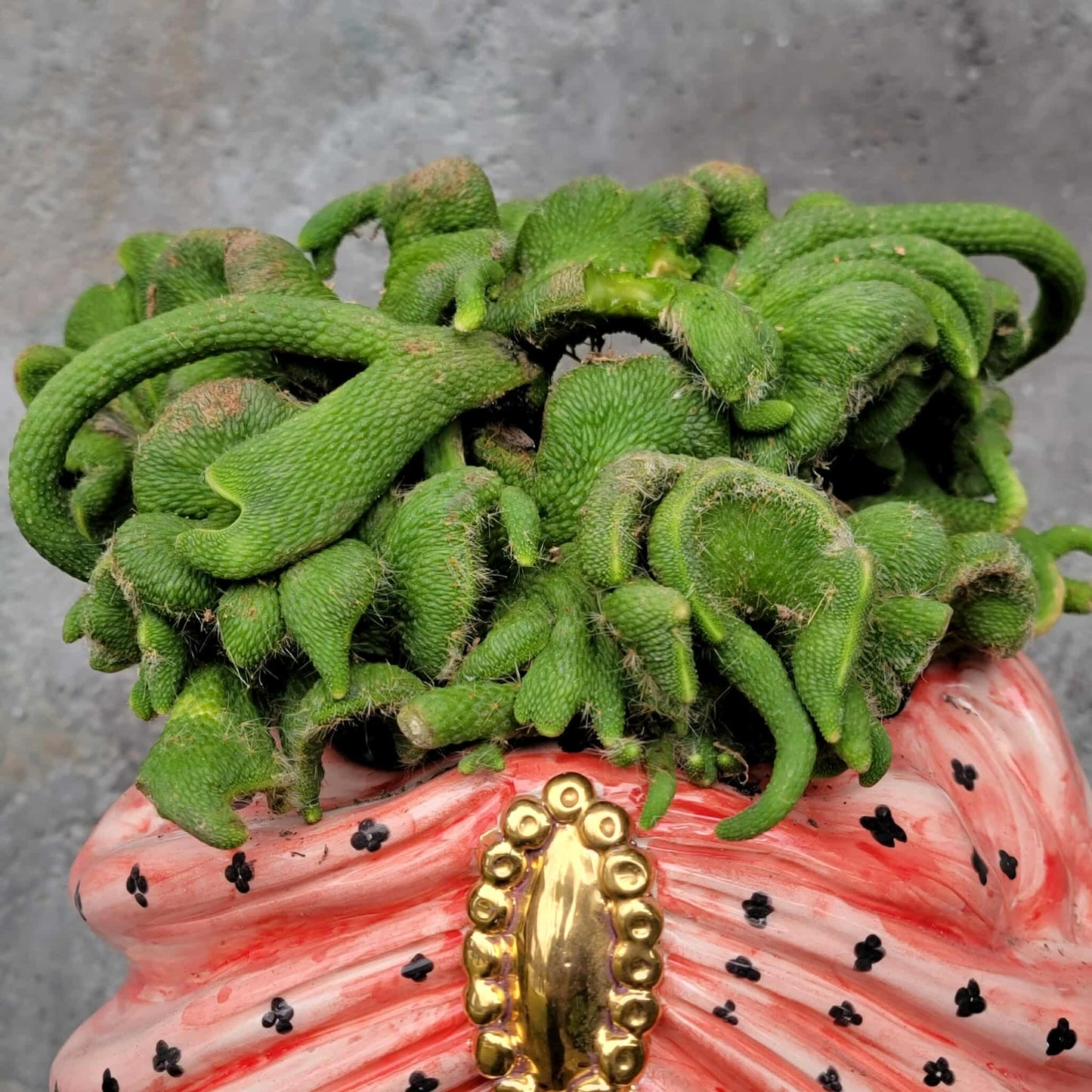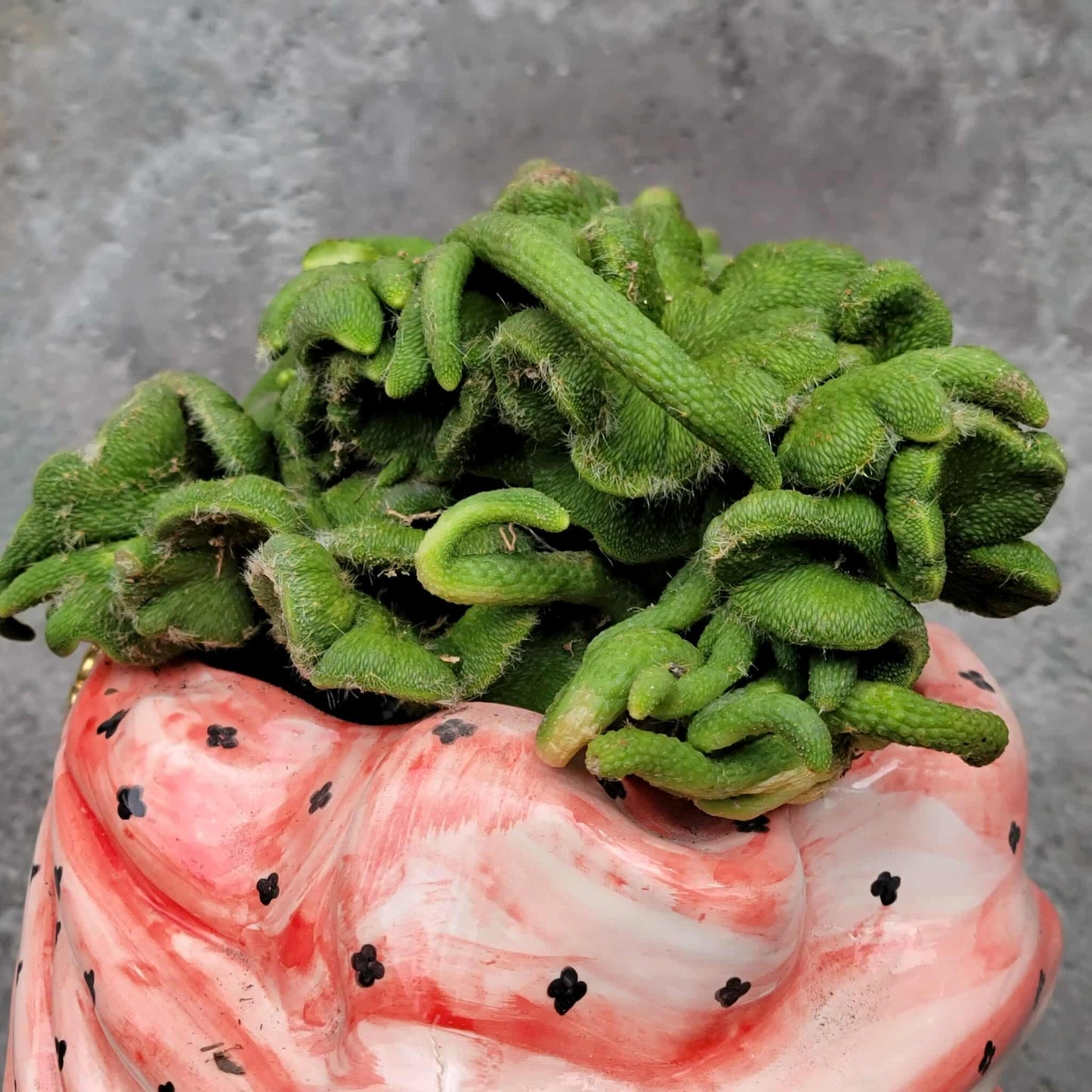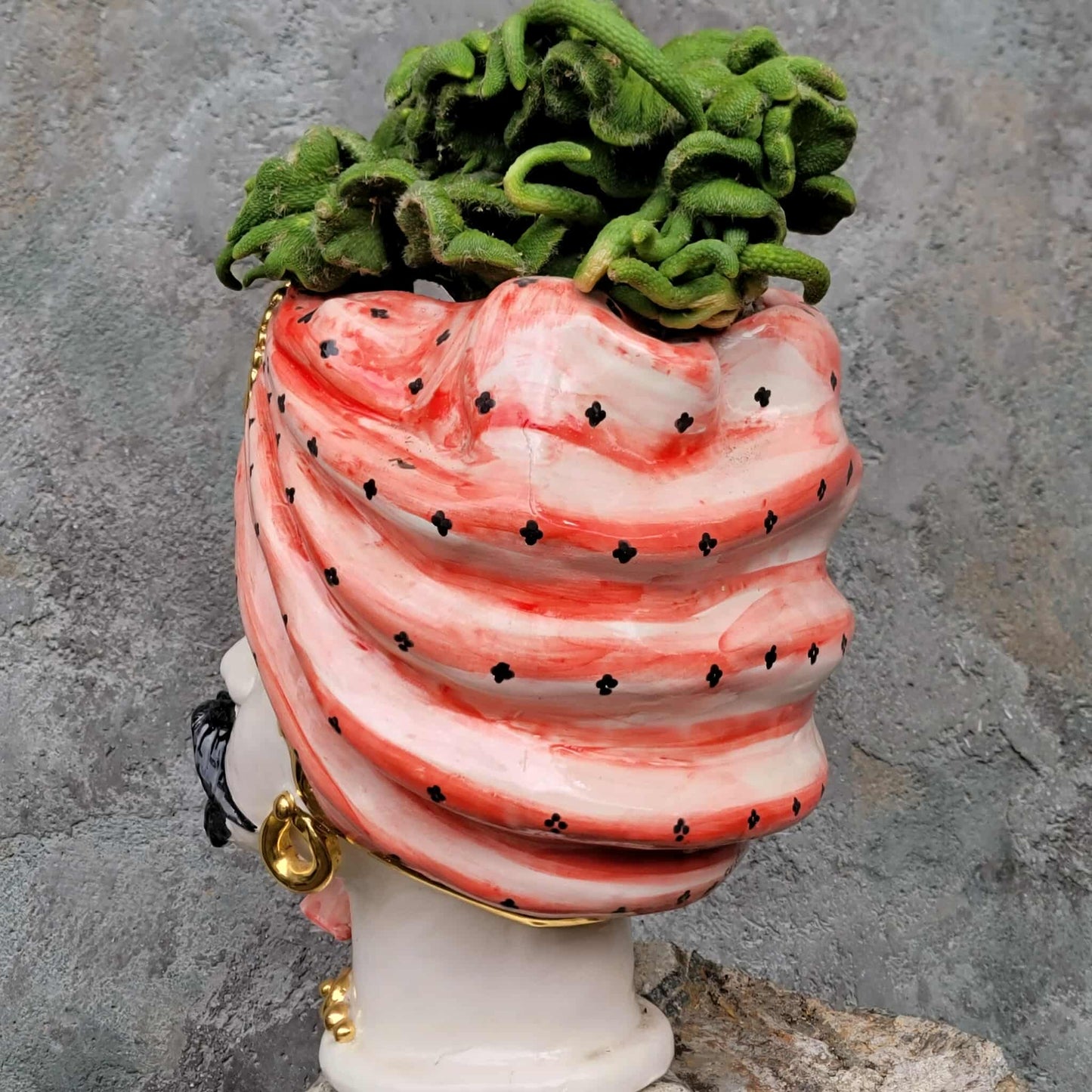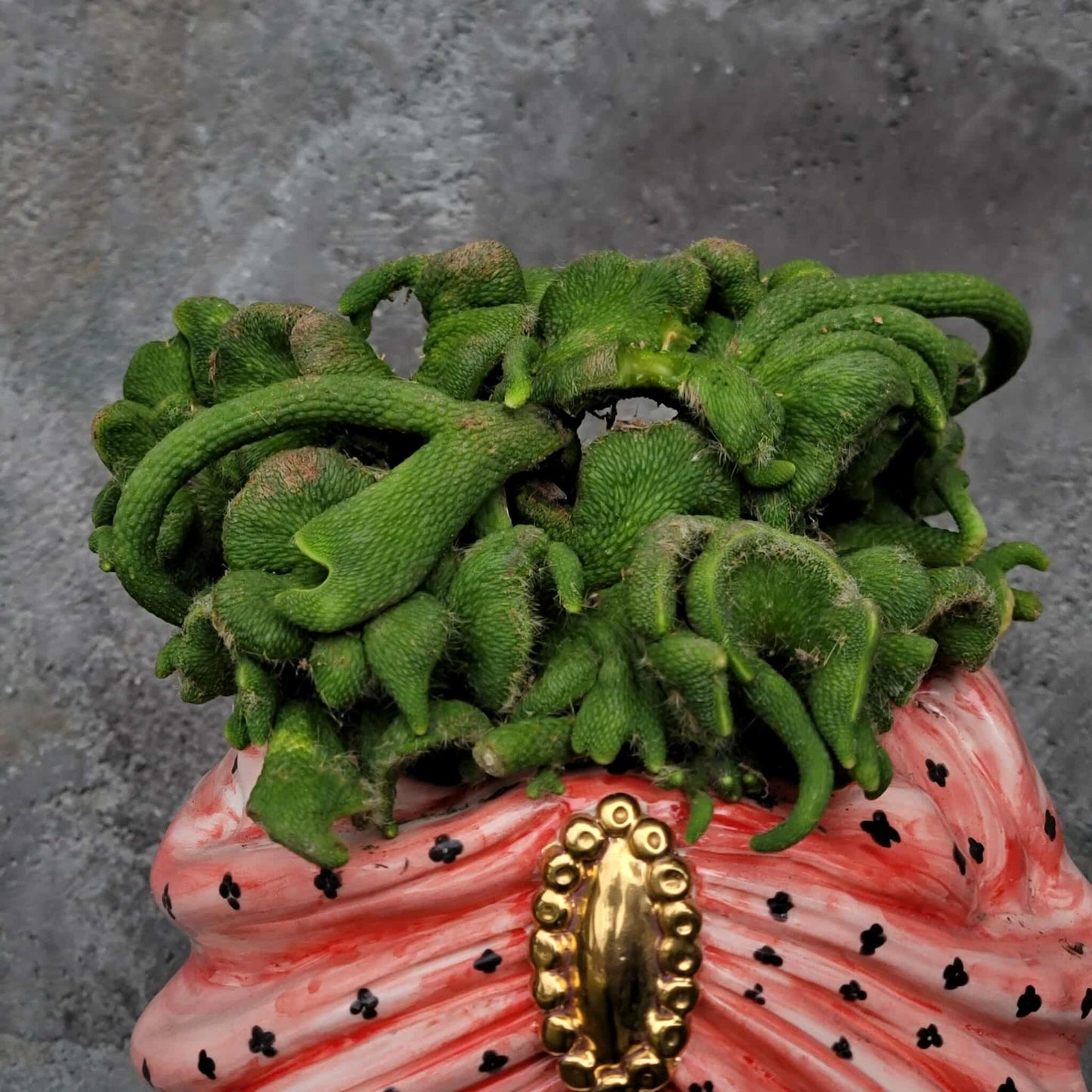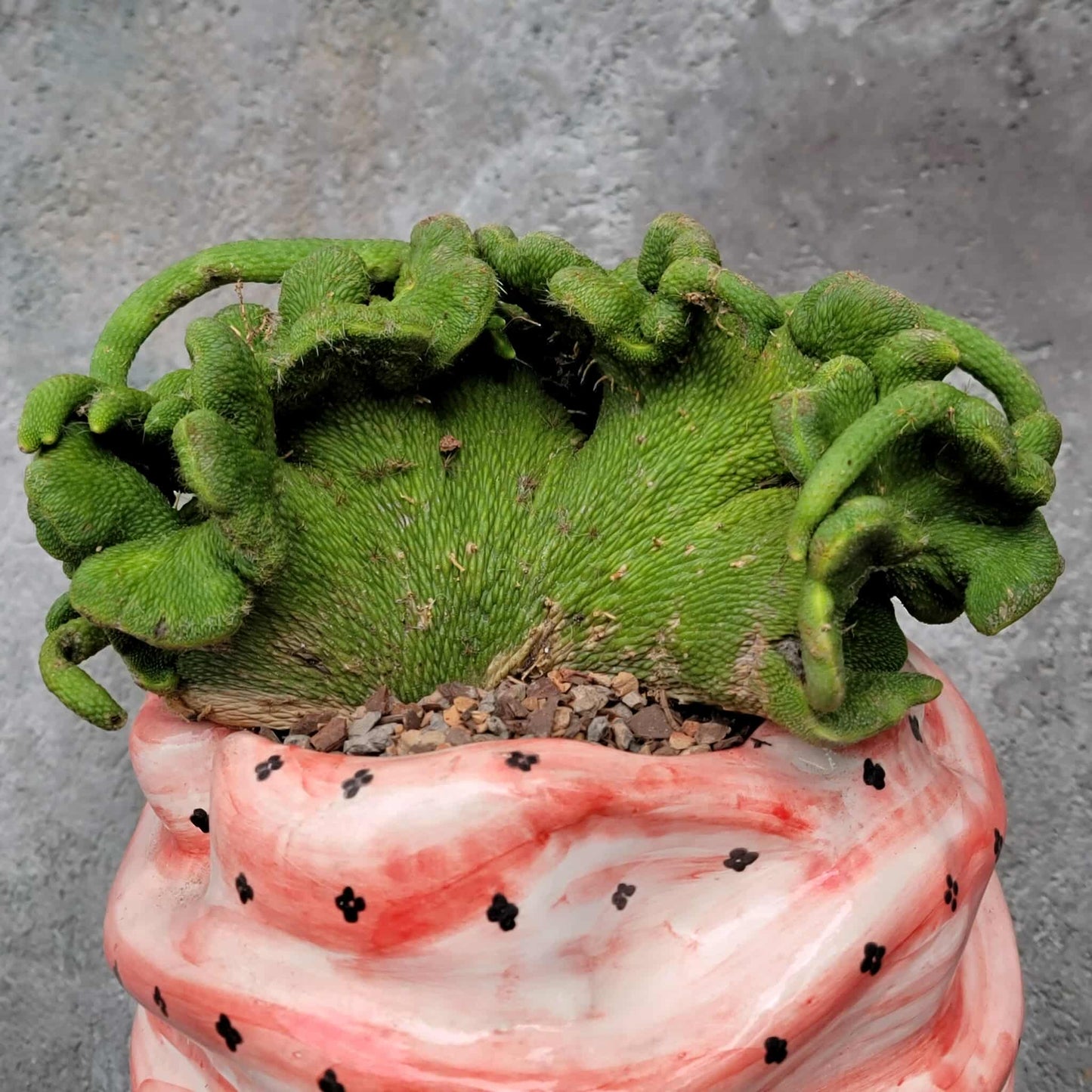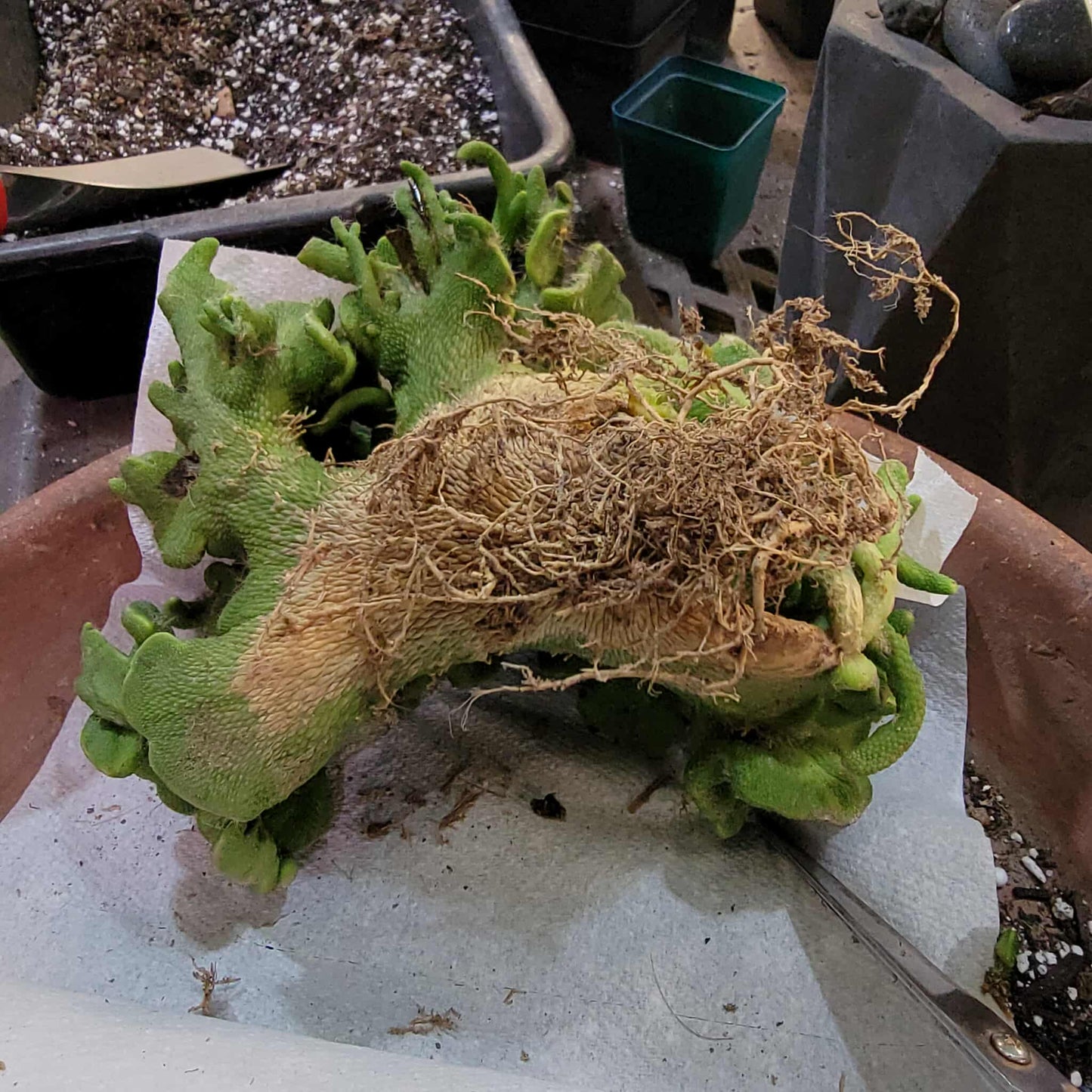Shangri-Ha Cactus Ranch
Cleistocactus colademononis inermis cristata - Crested Monkey Tail - XL
Cleistocactus colademononis inermis cristata - Crested Monkey Tail - XL
Couldn't load pickup availability
Cleistocactus colademononis inermis cristata
Loads of crests! You will receive this exact, HUGE specimen.
Measures 11" wide!!
Roots as shown.
Showcased here in one-of-a-kind Moor's Head, handmade in Sicily (sold separately).
Will be shipped bare root.
The name Cleistocactus colademononis inermis cristata refers to a rare and highly sought-after cactus known as the crested, spineless monkey tail. It is a unique mutation of the standard monkey tail cactus, prized by collectors for its unusual appearance.
Key Characteristics:
· Cleistocactus colademononis: The species, commonly called the "monkey tail cactus," is known for its long, trailing stems covered in soft, white, hair-like spines. It produces vibrant, tubular, red or orange flowers.
· inermis: This variation is the "naked" or spineless form of the monkey tail cactus. The soft, hair-like spines found on the normal variety are absent, revealing the green stem beneath.
· cristata: This mutation, known as "cresting," causes the plant to abandon its normal columnar or trailing growth pattern. Instead, its stems grow in a fan-like, convoluted, or brain-like shape, creating a sculptural and artistic form.
Characteristics of the Triple Mutation:
A Cleistocactus colademononis inermis cristata combines these three features, resulting in a unique specimen:
· Appearance: Instead of long, fluffy, trailing stems, it has an intricate, convoluted, or fan-shaped form.
· Texture: The crested stems lack the iconic white, hair-like spines, giving the cactus a smooth, naked surface.
· Rarity: This combination of genetic mutations is extremely rare, making these plants highly desirable and valuable to collectors.
Care:
Like the standard monkey tail cactus, the crested, spineless form is relatively easy to care for.
· Sunlight: Provide bright, filtered sunlight. While it can handle full sun, exposure to harsh, direct sunlight in hot climates can cause sunburn.
· Water: It requires well-draining soil and infrequent watering. Allow the soil to dry out completely between waterings. Reduce watering significantly during the winter months.
· Soil: Use a cactus mix that is 70–80% mineral grit, such as pumice, perlite, or coarse sand, to ensure excellent drainage.
· Container: Because of its trailing and compact nature, it can be grown in a regular pot, but a hanging basket can be used to showcase its unique form.
· Hardiness: It is not frost-tolerant and should be brought indoors if temperatures drop below 5° C.
